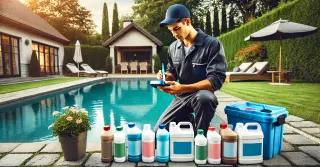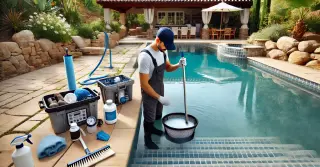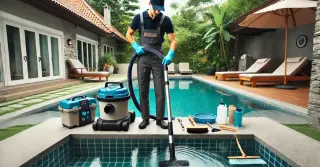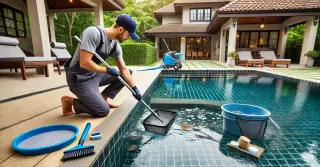Pool Chemical Balance Loris SC

Ensuring the right chemical balance is crucial for a safe and healthy swimming environment. Balanced chemicals inhibit algae and bacteria, maintain clear, clean water, and protect the pool's surface and equipment.
- Maintaining Proper pH: The pH level of your pool water is a measure of its acidity or alkalinity. A balanced pH level should be between 7.2 and 7.6. Low pH levels result in acidic water, causing skin irritation and equipment corrosion. If the pH is too high, the water becomes alkaline, leading to cloudy water and scaling on the pool surfaces. Regularly testing and adjusting the pH levels is vital for swimmer comfort and safety.
- Keeping Chlorine Balanced: Chlorine plays a crucial role in pool sanitation, as it kills bacteria, algae, and other harmful microorganisms. The ideal chlorine level should be between 1-3 ppm (parts per million). Too little chlorine can lead to unsanitary conditions, allowing bacteria and algae to thrive. High chlorine levels result in skin and eye irritation and create a strong chlorine smell. Consistently monitoring and adjusting chlorine levels ensures effective sanitation and swimmer comfort.
Managing Total AlkalinityTotal alkalinity is another critical aspect of pool water chemistry. Alkalinity stabilizes pH levels, avoiding sudden pH changes. The optimal total alkalinity range is 80-120 ppm.
- Avoiding pH Fluctuations: Proper alkalinity levels help stabilize pH levels, preventing rapid changes that can cause skin irritation and damage to pool surfaces. Low alkalinity results in unstable pH levels, making balance maintenance challenging. Excessive alkalinity results in cloudy water and scaling. Frequent alkalinity testing and adjustments is vital for a balanced and stable pool.
- Calcium Hardness Control: Calcium hardness measures the dissolved calcium in water. Proper calcium hardness levels range from 200 to 400 ppm. Low calcium levels result in corrosive water, harming surfaces and equipment. Excessive calcium causes scaling and water cloudiness. Frequent calcium hardness testing and adjustments is important for protecting your pool and ensuring clear water.
Proper Chemical Use and StorageProper handling and storage of pool chemicals is essential for both safety and effectiveness. Chemicals should be stored in a cool, dry place, away from direct sunlight and out of reach of children and pets. Always follow the manufacturer's instructions for correct dosing and application.
- Proper Chemical Measurement and Mixing: Precise measurement of pool chemicals is vital for correct balance. Using too much or too little can disturb chemical balance and water quality. Always use a clean, dry measuring tool and never combine chemicals directly. Mix chemicals in water if required, following the instructions carefully.
- Understanding Chemical Reactions: Certain chemicals can react dangerously if mixed. Never mix chlorine with acid, for example. Being aware of these interactions prevents accidents and ensures safe handling. Store chemicals apart and handle each carefully to avoid harmful reactions.
Ensuring the right chemical balance in your pool is vital for a safe, clean, and pleasant swimming experience. By consistently testing and adjusting pH, chlorine, alkalinity, and calcium, you ensure optimal water quality.
Safe use and storage of pool chemicals enhance the health and safety of your pool.




